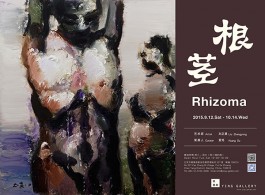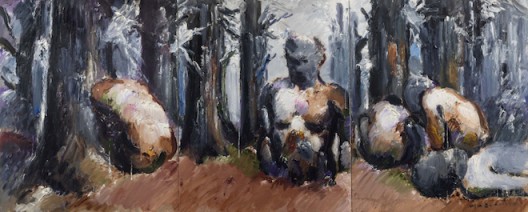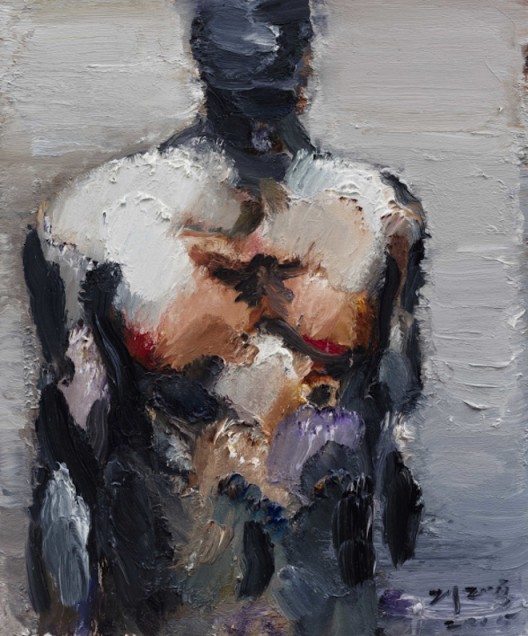By curator Huang Du
In botany, a rhizome refers to the root-like underground stalks of a plant that stretches out horizontally. These underground roots increase in thickness and take on a horizontal or radiating shape beneath the surface. In form, rhizomes look like roots while they also spread in all directions. At the tips there are buds, while on the nodes are auxiliary buds and adventitious roots. Just like the growth of plants, human thought is this process of continual unfolding. There is a similar peculiar relationship in thought and in neurons. The brain is structured in a rhizomic form, much like weeds; it is an “indeterminate system”. The development of the brain is the result of interactive movement between the exterior and the interior.
Liu Zhengyong’s paintings are as unrestrained as rhizomes, manifesting a free and untrammeled form. Even though he is focused on the body (whether it be the chest, the truck, or a body without organs), his target is not about granting new definitions but to clearly display a distinct relationship between the language of the body and a sensate life. In the view of Liu Zhengyong, the concept of the body is not tedious, abstract, and closed off, but rather is entirely warmhearted, concrete, and open. Hence the body serves to reflect the spiritual spectacle of the human existential condition. Liu Zhengyong is fond of a subjective imagination and expression of the body. He does not wish to ponder over philosophical issues about the relationship between the spirit and the body, but rather aims to outline its spiritual layers (for instance, in terms of gender, pleasure, anxiety, repression, desire). Thus in this sense, Liu Zhengyong has unveiled the discursive order of the body. It can be said that his paintings’ narration is not based on the completeness or perfection of the image but rather the incomplete or imperfect nature of the image. This is determined by his language of painting, bearing the weight of that visual tension between freedom and control, of the incomplete and the complete, of release and restraint. In order that the picture plane has a greater tangible texture, Liu Zhengyong has subjectively increased the sensation of thickness in the colors, especially by using grouped brushes to paint layer after layer of colors. The touch of the brush, so full of rhythm, utterly manifests the grains of texture and its tactility. With a method of using hues which verge on purely black and gray and of using sparse colors, he portrays the body into somewhat “savage” or “wild” sculptural stances, with a solemn and tragic air permeating all, inculcating or indicating or implying an inner meaning—both letting one sense the solidity and power of the body and yet also letting one come to realize its softness and pathos. Liu Zhengyong’s pictorial narrative does not merely provide new cognitive dimensions but also offers up new modes of sensation.
Liu Zhengyong’s paintings express that distinctive relationship between the personal and the body, the experiential and the material, the inner and the outer. He brings the body into such distinctive “indeterminate” lines of sight; in other words, life and death, pleasure and pain, reason and insanity are viewed as mysterious, abnormal, and unpredictable things. Just like what is expressed in his paintings, humanity’s free consciousness will forever be granted infinite possibilities—constantly overstepping, constantly changing, constantly leaping forward.





